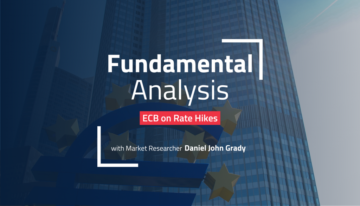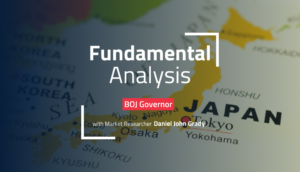The release of key industrial data from China tomorrow and next week could substantially shake up global markets. The world’s largest manufacturer, and second largest economy, has been seen as the hope of driving the world’s economy forward. But some of the recent data hasn’t been all that auspicious, leaving many to question whether China will have a rebound. Tomorrow’s data could help answer that question, and either propel commodity currencies, or bring around another wave of safe haven moves.
Earlier this week, China’s Premier Li Qiang reaffirmed the government’s forecast that the country would reach its goal of around 5.0% GDP growth this year. That comes after growing 4.5% annualized in the first quarter. Premier Li said that the second quarter would show faster growth. International analysts have been cutting their growth forecasts in the last couple of weeks, but the average still remains above the official forecast of the Chinese government at 5.2%. The World Bank and the IMF recently both upgraded their forecasts, also saying they expected the Chinese economy to grow faster than 5.0%.
What does the data say
But, in order for China to grow, its industry needs to be doing well. And last month’s PMIs threw some cold water on the prospects for that growth, when the manufacturing component fell into contraction. Since then, the Chinese government and the PBOC have made several moves to prop up the economy. And Premier Li also promised that more measures to support the economy were coming. That might be enough to swing the PMI survey back to expansion, but it might take a few more expansionary readings to convince investors and raise commodity prices.
The official China June Manufacturing PMI is expected to rise back to expansion at 51.0 from 48.8 in May. The private Caixin measure will come out on Monday. June Caixin Manufacturing PMI is expected to slow down a little, but remain in expansion at 50.4 compared to 50.9. The return to positivity might help risk appetite. But if it’s accompanied by a drop in the private measure, the upside might be limited.
What about commodities?
Commodity currencies have been in a bit of a roller-coaster lately, pushed by generally worrisome domestic data being offset by bouts of positivity on China. For example, the Aussie gained substantially after the RBA raised rates due to unexpectedly high inflation. But yesterday inflation was reported well below expectations, and then the chances of another hike were cut, weakening the Aussie.
This opens the question for what will happen in Canada, where the BOC made a similar move, and we haven’t seen inflation data, yet. But the price of crude remains under pressure, falling this week despite API inventories being below expectations. Demand from the largest importer, China, is seen as shaky as investors still aren’t sure if there will be a rebound there.
The bottom line is that although the measures taken by the Chinese government to boost the economy are generally positive, there is a flip side. That is, if the economy were firmly growing, such measures wouldn’t be necessary. A substantial beat in the PMIs might help reassure investors that China might be turning the corner. But a miss could shake confidence in the global rebound.
Test your strategy on how the CNY will fare with Orbex
- SEO Powered Content & PR Distribution. Get Amplified Today.
- PlatoData.Network Vertical Generative Ai. Empower Yourself. Access Here.
- PlatoAiStream. Web3 Intelligence. Knowledge Amplified. Access Here.
- PlatoESG. Automotive / EVs, Carbon, CleanTech, Energy, Environment, Solar, Waste Management. Access Here.
- BlockOffsets. Modernizing Environmental Offset Ownership. Access Here.
- Source: https://www.orbex.com/blog/en/2023/06/china-pmis-and-possible-commodity-support
- :has
- :is
- :where
- $UP
- 2%
- 50
- 51
- 8
- 9
- a
- About
- above
- accompanied
- After
- All
- also
- Although
- Analysts
- and
- annualized
- Another
- answer
- api
- app
- appetite
- ARE
- around
- AS
- At
- aussie
- average
- back
- Bank
- BE
- been
- being
- below
- Bit
- Blog
- BoC
- boost
- both
- Bottom
- bouts
- bring
- but
- by
- Canada
- chances
- China
- China PMIs
- Chinas
- chinese
- cold
- come
- comes
- coming
- Commodities
- commodity
- commodity prices
- compared
- component
- confidence
- contraction
- convince
- Corner
- could
- country
- Couple
- crude
- currencies
- Cut
- cutting
- data
- Demand
- Despite
- does
- doing
- Domestic
- down
- driving
- Drop
- due
- economy
- either
- enough
- Ether (ETH)
- example
- expansion
- expectations
- expected
- Falling
- faster
- few
- firmly
- First
- Flip
- For
- Forecast
- forecasts
- forex
- Forex Trading
- Forward
- from
- gained
- GDP
- gdp growth
- generally
- Global
- global markets
- goal
- Government
- Grow
- Growing
- Growth
- happen
- Have
- help
- High
- High inflation
- Hike
- hope
- How
- HTTPS
- if
- image
- IMF
- in
- industrial
- industry
- inflation
- into
- Investors
- IT
- ITS
- june
- Key
- largest
- Last
- leaving
- li
- Limited
- Line
- little
- live
- made
- Manufacturer
- manufacturing
- many
- Markets
- May..
- measure
- measures
- might
- Mobile
- Mobile app
- Monday
- more
- move
- moves
- necessary
- needs
- next
- next week
- of
- official
- offset
- on
- opens
- or
- order
- out
- PBOC
- plato
- Plato Data Intelligence
- PlatoData
- pmi
- positive
- Positivity
- possible
- premier
- pressure
- price
- Prices
- private
- promised
- Propel
- prospects
- pushed
- Quarter
- question
- raise
- raised
- Rates
- RBA
- reach
- reaffirmed
- reassure
- rebound
- recent
- recently
- release
- remain
- remains
- Reported
- return
- Rise
- Risk
- risk appetite
- safe
- Safe Haven
- Said
- saying
- Second
- second quarter
- seen
- several
- show
- side
- similar
- since
- slow
- some
- Still
- Strategy
- substantial
- substantially
- such
- support
- Survey
- Swing
- Take
- taken
- than
- that
- The
- the world
- their
- then
- There.
- they
- this
- this week
- this year
- to
- tomorrow
- Trading
- Turning
- under
- upgraded
- Upside
- URL
- was
- Water
- Wave
- we
- week
- Weeks
- WELL
- were
- What
- when
- whether
- will
- with
- world
- World Bank
- world’s
- would
- year
- yesterday
- yet
- Your
- zephyrnet












